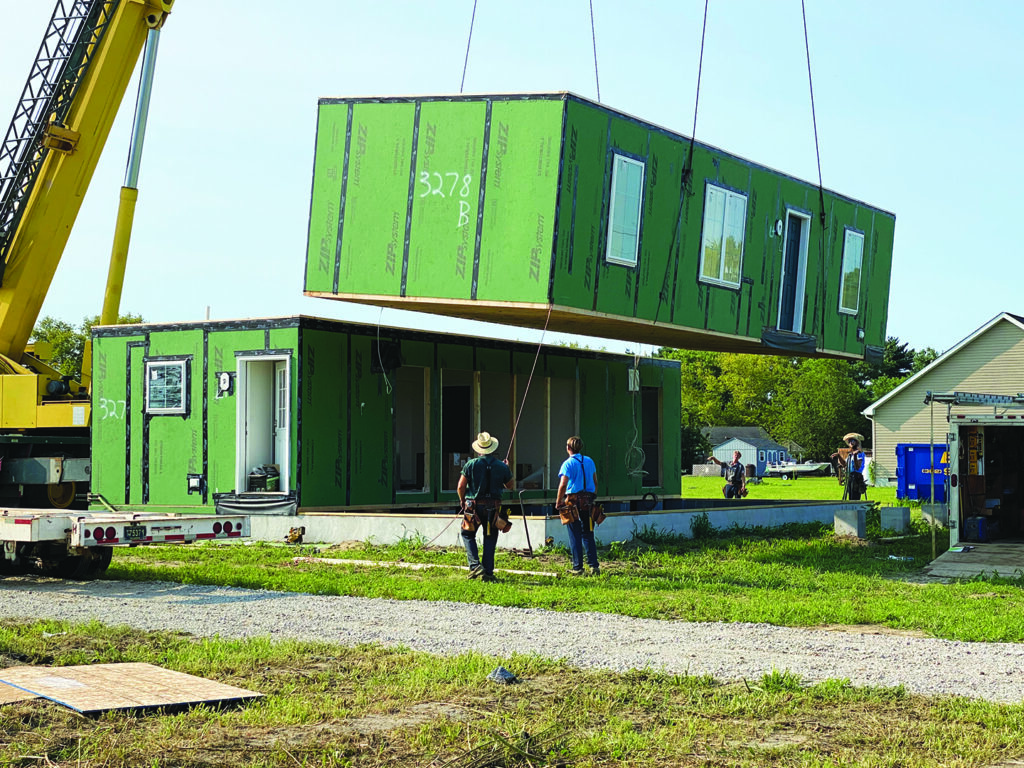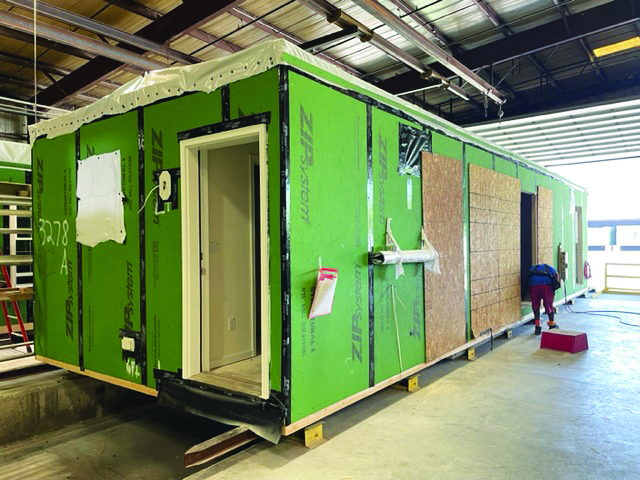An award-winning, zero-energy housing program is exploring ways to lower the cost of energy-efficient modular homes
- The program has set a goal of building high-performance modular homes at a lower cost than stick built.
- While meeting the performance target was straightforward, the financial goals are proving to be more of a challenge.
- Program managers continue to look for ways to whittle down construction costs.
A promising small-home modular pilot, ZeMod Delaware, has encountered some financial challenges with meeting its energy savings and home price goals, but the staff believe they can eventually reach those goals. In fact, they hope to expand the program and continue it with new funding.
The program is a collaborative project and includes the non-profit corporation Delaware Sustainable Energy Utility doing business as Energize Delaware, Milford Housing Development Corporation (MHDC), Beracah Homes in Greenwood, Delaware and the Vermont Energy Investment Corporation. Since it launched in 2019, the program has constructed six homes in Delaware’s Kent and Sussex Counties.
The program’s partners decided on the modular approach and worked to find financing and subsidies, according to Jim Purcell, Energy Efficiency Program Director at MHDC. “We also helped with closing costs and down payments.”

Photo courtesy of Daniel Van Vorst
Performance Winners
Building scientists and homebuilders have collaborated for decades on designs, details and equipment that make homes more energy efficient, healthier, more comfortable and more durable. As a result, the road to high performance has been clearly mapped, and ZeMod certainly followed that map.
From a performance standpoint, in fact, it has been a clear winner. It was awarded the US Department of Energy’s Zero Energy Ready Home award in August 2022 for one of its homes, according to an announcement from Energize Delaware. It also received the grand prize at the Energy & Environmental Building Alliance’s High Performance Home Summit in September 2022.
The modular components for the ZeMod homes were manufactured in the Beracah factory, then assembled and finished by the company’s field crews. The finished houses are designed for low-to-moderate income homeowners and feature energy efficiency and solar power.
“There essentially were two models that we had,” Purcell says. One was a small, two-bedroom, rectangular-shaped model. It was built within the confines of the plant and then assembled at the location, where it was finished and outfitted with solar. The second home was a three-bedroom ranch-style home built using the same process.
The homes were outfitted with Energy Star appliances, Purcell says. The heating and cooling systems are managed by a sophisticated thermostat. The houses included on-demand heat pump water heaters manufactured by State and Bradford White that are heated and cooled similarly to HVAC heat pumps. The HVAC system and the condenser were manufactured by Mitsubishi. The ducted conditioning energy recovery ventilation system was manufactured by Broan.
According to Green Builder Media, a media company based in Lake City, Colorado, the homes have a measured air tightness of 1.5 ACH50. The attics are insulated to R-50 with 7.25 in. of densely packed fiberglass and 7.75 in. of loose-fill fiberglass. The foundation has R-30 fiberglass batts. Ductless heat pumps deliver 11 HSPF and 26 SEER. The heat pump water heater has an EF of 2.78. The double walls have an R-value of 33.5. The homes use EPA WaterSense fixtures and double-paned, argon-filled windows.

Photo courtesy of Daniel Van Vorst
Costs Remain a Challenge
While the performance path was well-defined, hitting the financial targets has proven more difficult. “Our goal is to create near-zero-energy homes,” Purcell says. “We want homes that are built with very tight standards in terms of air sealing and insulation. We want these homes’ utility costs to be less than $20 or $30 a month.”
But while four of the six homes have achieved those low utility costs, two have not — they have had monthly bills between $70 and $90. He thinks that the electrical draw is coming from some unaccounted-for plugged-in loads, which have more to do with occupant lifestyle choices than with the homes themselves. The team is doing an energy audit to find the sources.
Keeping the purchase price of the homes low has also been more difficult than the team expected. Their target was to sell them for less than $250,000, but high construction costs ended up driving that selling price up to nearly $300,000, Purcell says.
“We went through COVID and all the inflationary costs that happened after COVID,” Purcell explains. “Inflation caused our prices to go up and they got way above where we wanted to be. We’re hoping that we can maintain an affordable price point, but also take advantage of any innovations in the technology and building materials. We really would like to get to a point where costs become a little bit more predictable so that we can then put together a design using materials that we know are going to be available and within our price range.”
The eventual goal is to get to a home design that can stand on its own financially. At this point, however, the numbers need outside help to work. “We’re not going to leave any stone unturned in terms of public- or private-sector dollars,” Purcell says.

Photo courtesy of Daniel Van Vorst
Looking Ahead
Natalie Kozlowski, a corporate sustainability specialist from Wilmington, Delaware who participated in and had a positive experience with another Energize Delaware program, questions whether these homes will be sufficiently affordable, especially when down payments and property taxes are taken into account.
Currently, financing for this program comes from Energize Delaware and the Regional Greenhouse Gas Initiative, Purcell says. The program also seeks affordable financing from organizations such as the US Department of Housing and Urban Development, the US Department of Veterans Affairs and the US Department of Agriculture.
Looking toward the future, Purcell says that the program may grow and leverage new funding from other government programs, energy rebates, and solar and [energy] storage credits. “We are moving forward with a new strategic plan to incorporate this as a permanent fixture of our organization because we know where things work and where they don’t work.”
Providing more consumer and contractor education is a goal the team has in mind as they compile a report about the project, Purcell says. “We need to have better monitoring in place, as well as someone in the field who can go and troubleshoot things that come up when they do arise. We certainly are interested in pursuing this project — not just in the modular sense but also in a stick-built sense.”
Programs like this could eventually fill a niche for developing energy-efficient small houses. We know how to build them, but in order to become attainable for homebuyers, those homes will need deliver the promised cost savings. We’re not there yet.
Kat Friedrich writes about energy, engineering, physics and technology. She is a graduate of the University of Wisconsin-Madison College of Engineering and is the editor in chief of Solar Today.

















